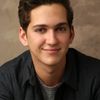
When I was 10 months old, I was diagnosed with an anaphylactic food allergy to wheat, rye, oats and barley. As I've written about in my article, "Pizza and Oreos Would Have Killed Me, But They're Now My Medicine," which can be found here, I was always extremely cautious, for only a couple of crumbs could have put me into anaphylactic shock. And over the years, I've had my share of scares, involving trips to the hospital and epi-pen injections. My family and I were hoping that some day, a genius researcher/doctor would appear and help do something about food allergies. We finally found that person and I enrolled in a food allergy study at Stanford University led by Kari Nadeau. Ever since then, my life has changed dramatically.
As I have been a participant in the study for roughly two years now, I have never fully understood what has been happening to me. It occurred to me a few months ago that I should probably try to learn about the science behind my food allergy, and how the oral immunotherapy was scientifically changing my body. These changes in my lifestyle were infinite, but how was all of this even possible? Who was behind the scenes, making sure that everything was safe, and okay to be conducted? My brain swelled with all of the questions racing through my mind, so I needed to think of a way to at least try to find out about what was happening to my body.
I am fortunate enough to attend a school which provides students in their junior or senior year the opportunity to create independent studies. The student designs the curriculum, builds a framework for the class and chooses the best fit teacher to guide the research.
I thought to myself, why not try an independent study? How often is it that a student can do research on a project that is directly affecting their life, while simultaneously changing their body? Especially, a science project. I kept thinking of ways that I could go about the independent study. I sat with my parents, and asked them about what I should do. They suggested that I write down 10 or so questions that I have developed throughout the course of the study. And so I did. I brought them in to my science teacher the next day. He looked them over, and we decided to think about ways that we could find the answers to these questions. We scheduled a conference call with the lead doctor of the allergy study at Stanford, Kari Nadeau.
Kari Nadeau: A mother of five; two sets of twins, and an older boy, proud owner of multiple pets, ranging from rodents to dogs, wife of a brain surgeon and lead doctor of a food allergy study at Stanford. This woman made the time to talk to me, and my science teacher. She is just incredibly organized. Kari explained to us what she and her employees do in the lab at Stanford, and why they do the things they do. I presented my questions, and asked her how I should go about researching them. She graciously invited me to her lab in Palo Alto to meet the lab assistants and get a little taste of what they do. At the lab I could research some of my questions and her mysterious lab assistants could direct me on the path to find answers and plan out an independent study.
I was so overwhelmed, yet so excited. When I get an opportunity like that, I take advantage of it. My parents and I planned the summer, and made adjustments so that I could go to Dr. Nadeau's lab. We had figured out a way to make it work.
As I boarded the plane to San Francisco with my cousin as chaperone, I was anxious and excited, ready for the journey that lay ahead. I, the human lab rat, was about to enter the lab. I was about to see what these researchers were doing to my body, and discover how they were changing my life in a scientific way. I was honestly very nervous, worried that I was not equipt to be in the presence of such scientific genius, but the thrill of the upcoming experience overrode my nervousness.
The next day, I pulled up to the hospital in the rental car, and was greeted by Shu-chen Lyu, a member of the Nadeau lab since 2011. She greeted me with a huge smile, and was eager to show me around. We took the elevator up, and walked across the many hallways to finally arrive to the lab. She pointed to go to the left, and so I did. And there it was. The fabled lab where Dr. Nadeau and her team did all of their research. Here I was introduced to a few of the lab members: Jennifer, Erik, Unni, etc. It was honestly a bit strange to meet the people behind all of this research. And I'm sure it must have been odd for the researchers in the lab to see their human lab rat, so to speak. We reminisced about life in the study, how it has changed my life, why I was at the lab, etc. I was instructed to go with Erik, to watch him conduct a series of tests. It was interesting to see him test the blood of patients in the study, (obviously he did not tell me who the people were, because that would violate their rules). I did not have my blood drawn at the time, but when I go back out there within the next few months, I will be sure to test my own blood. Now that will be a bit strange: Having the opportunity to see how my blood has evolved/changed.
I explained to all of the people in the lab that as a patient in the study, I really wanted to know exactly what they were possibly doing to my body. I gave them a list of some of my questions. Some of those questions included: What even is an allergy? What is Xolair, and how is it changing my immune system? (Xolair was the drug that I took in the beginning of the study.) What does the Epipen actually do? My questions ranged from basic, to extremely sophisticated. In my next article, I hope to have some answers for you all!
During my week at the lab, I was able to get a few readings from the people there, learn a bit about what they do and also the process of how they do things. It was amazing to get exposed to this, and I look forward to learning much more about food allergies!
I just wanted to conclude with a brief note. The work that Dr. Nadeau and her Stanford team are accomplishing is life-changing and cutting edge. The whole team is so passionate about their research, and they really want to find the cure for food allergies. They have a wonderful sense of urgency to solve an important problem, and they do it so well. It is these kinds of people who enhance the world as we know it.
